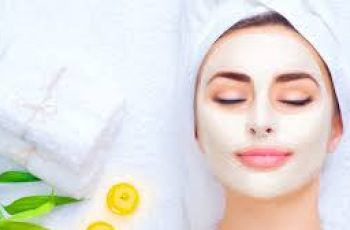
What Skincare Ingredients Are Sourced from Bees?
Bee-derived skincare products have soared in popularity over the years, and it’s no wonder.
The buzzing world of bee-inspired beauty is filled with natural ingredients that offer a range of benefits for your skin.
From serums and masks to creams and lip balms, bee-based products are everywhere.
So, let’s dive in and explore the skincare ingredients sourced from bees, how they benefit the skin, and why they’re such a buzz-worthy addition to your beauty routine.
What Ingredients from Bees Are Used in Skincare?
Several key ingredients from bees have found their way into skincare products due to their incredible benefits. Here are the most common ones you’ll find in high-performing skincare formulas:
Honey, Beeswax, Propolis, Royal Jelly, Bee Venom
Let’s break each one down.
What Does Honey Do for the Skin?
Honey has been used for centuries as a beauty remedy, dating all the way back to Ancient Greece. Today, it’s still revered for its remarkable benefits:
Naturally Antibacterial: Honey’s natural antibacterial properties make it perfect for treating acne-prone skin.
Balances Hormonal Skin: Honey can help calm hormonal fluctuations that contribute to breakouts or changes in skin texture.
Packed with Antioxidants: It helps fight free radicals, which can contribute to premature aging.
Humectant: Honey draws moisture from the air and locks it into the skin, leaving your skin feeling hydrated and soft.
Anti-Aging: It can help smooth fine lines and wrinkles, giving the skin a more youthful appearance.
For these reasons, honey is commonly found in treatments like serums, overnight masks, and body butters. Its hydration powers are perfect for tackling dry skin and pigmentation from acne scars.
Simply apply some honey to the affected area nightly, and in about 4 weeks, you should notice an improvement in your skin’s tone.
What Are the Side Effects of Honey on the Face?
Despite all its amazing benefits, some people may be allergic or sensitive to honey. To avoid reactions, always perform a patch test first:
Apply a small amount of honey to the inside of your arm.
Wait 24 hours and observe for any irritation such as swelling, redness, or itching.
If no irritation occurs, it should be safe to apply it to your face.
If you have concerns, consult with your doctor or dermatologist before using honey on your skin.
What Does Beeswax Do for the Skin?
Beeswax is often hailed as one of the most versatile bee-derived ingredients in skincare. It’s found in many balms, lotions, and lip care products due to its skin-protecting properties:
Creates a Barrier: Beeswax forms a protective layer on the skin, shielding it from environmental damage like pollution and harsh weather.
Natural Moisturizer: Beeswax helps retain moisture in the skin, leaving it soft and hydrated.
Rich in Vitamin A: This vitamin aids in skin regeneration and helps keep your skin smooth and glowing.
Strengthens Skin: Beeswax supports the skin’s natural barrier and makes it more resilient.
Beeswax is often used in rich balms and creams, especially for areas prone to dryness, such as lips, elbows, and feet.
It’s the ultimate ingredient for sealing in moisture and providing long-lasting hydration.
Are There Any Side Effects from Using Beeswax?
For most people, beeswax is safe to use directly on the skin. However, like any product, it’s important to test it first to avoid allergic reactions.
Perform a patch test before using it liberally, and discontinue use if irritation occurs.
Is Bee Propolis Good for the Skin?
Bee propolis is a powerful ingredient packed with healing properties. This resin-like substance is used by bees to protect their hive and can do wonders for your skin too. Here are its benefits:
High in Antioxidants: Bee propolis shields the skin from environmental damage and free radicals.
Antibacterial: It helps combat blemishes and acne by inhibiting bacteria growth.
Rich in Vitamins B, C, and E: These vitamins help nourish and repair the skin.
Skin Renewal: Bee propolis boosts the skin’s natural regeneration process, enhancing the glow and firmness of the skin.
Natural Healer: It can repair skin damage, including scarring from acne and other blemishes.
Bee propolis has been used in skincare for centuries, and it remains one of the most popular ingredients in anti-acne and blemish-fighting products.
What Are the Side Effects of Propolis?
If you have a known allergy to bees or bee products, you should avoid using propolis. Always perform a patch test to be sure it’s safe for your skin.
What Does Royal Jelly Do for the Skin?
Royal jelly is the nutrient-packed substance that worker bees feed to their queen bee, giving her extraordinary longevity and vitality.
It’s no surprise that royal jelly has been used throughout history for skincare—Cleopatra herself was said to have used it to maintain her youthful glow.
Here’s what royal jelly can do for your skin:
Rich in Fatty Acids, Amino Acids, and Vitamins: These nutrients support overall skin health and hydration.
Natural Antibiotic: Its antibacterial properties help protect the skin from infection.
Supports Skin Renewal: Royal jelly helps stimulate collagen production, which can result in firmer, smoother skin.
Fights Premature Aging: It can reduce the appearance of fine lines and wrinkles, leaving the skin looking youthful and plump.
Royal jelly is often found in high-end skincare products, including moisturizers, serums, and masks. It’s known for making the skin look more radiant and youthful, with increased firmness.
Are There Any Side Effects from Using Royal Jelly on Your Skin?
If you’re not allergic to bee products, royal jelly is generally safe for most skin types. As with any new product, it’s best to perform a patch test first.
If irritation or allergic reactions occur, discontinue use and consult with a dermatologist.
What Are the Skin Benefits of Bee Venom?
Bee venom is the ultimate natural botox ingredient that has taken the skincare world by storm. It’s often found in plumping and anti-aging products such as face masks, lip balms, and serums.
Here’s how bee venom benefits the skin:
Botox-like Effects: Bee venom can temporarily relax facial muscles, mimicking the effects of Botox without the injections.
Tighter, Smoother Skin: It promotes a firmer, smoother complexion, reducing the appearance of sagging or fine lines.
Reduces Fine Lines and Wrinkles: Bee venom boosts collagen production and helps smooth out wrinkles over time.
Improves Circulation: By stimulating blood flow, bee venom helps to plump the skin, creating a more youthful, radiant look.
With bee venom, you can experience the benefits of botox without the pain or price tag. It’s a popular ingredient for those seeking to tighten and rejuvenate their skin naturally.
What Are the Side Effects of Using Bee Venom?
Bee venom is not safe for everyone. If you have an allergy to bee stings or bee products, you should completely avoid products containing bee venom.
Even if you don’t have a known allergy, it’s essential to perform a patch test before using it on your face.
Always consult with a healthcare professional if you’re unsure about its suitability for your skin.
Final Thoughts: Are Bee-Based Skincare Products Right for You?
Now that you know the main bee-derived ingredients used in skincare, it’s easy to see why they’ve become staples in beauty routines worldwide.
Honey, beeswax, propolis, royal jelly, and bee venom all offer unique and powerful benefits that can address a variety of skin concerns, from dryness and acne to signs of aging and dullness.
However, as with all skincare products, it’s essential to be mindful of any allergies or sensitivities you may have.
Always patch-test before applying any new ingredient to your face, and if you have any concerns, consult with a dermatologist.
With the right products, you’ll be buzzing with confidence as you incorporate these bee-derived ingredients into your skincare routine!


